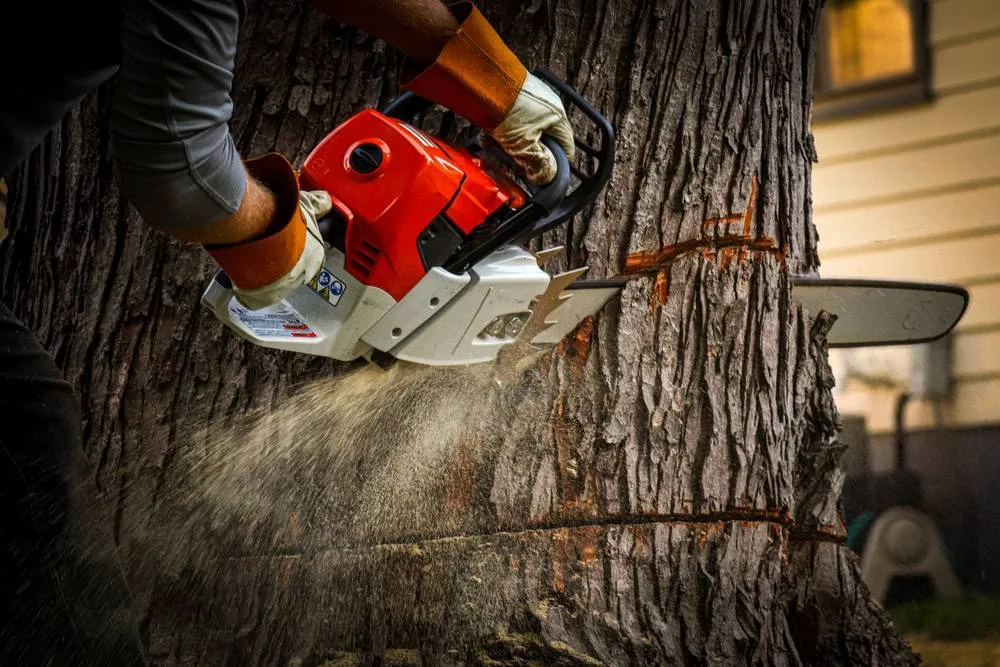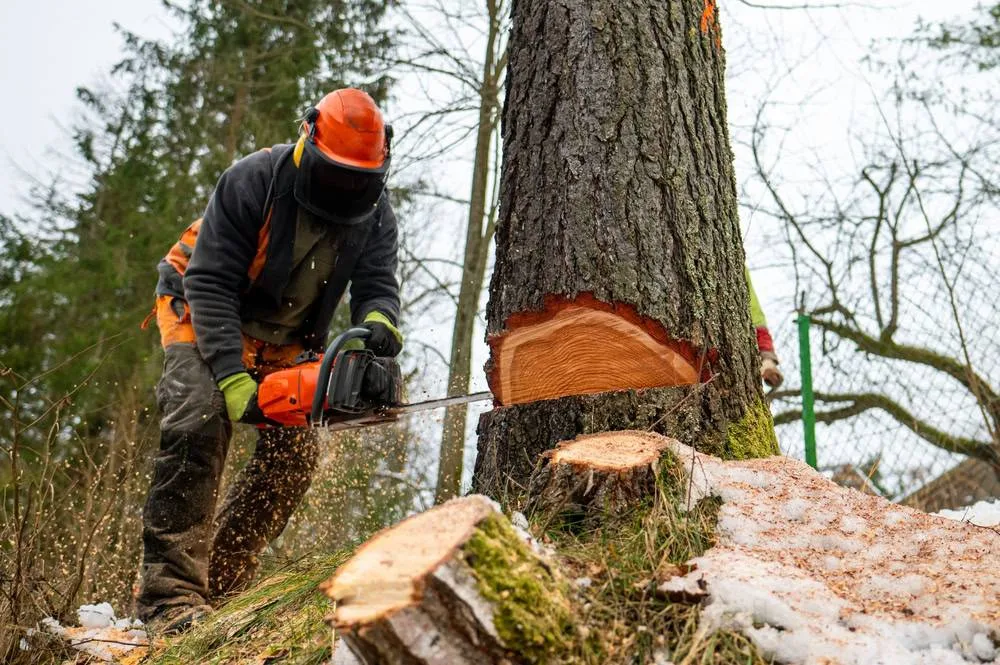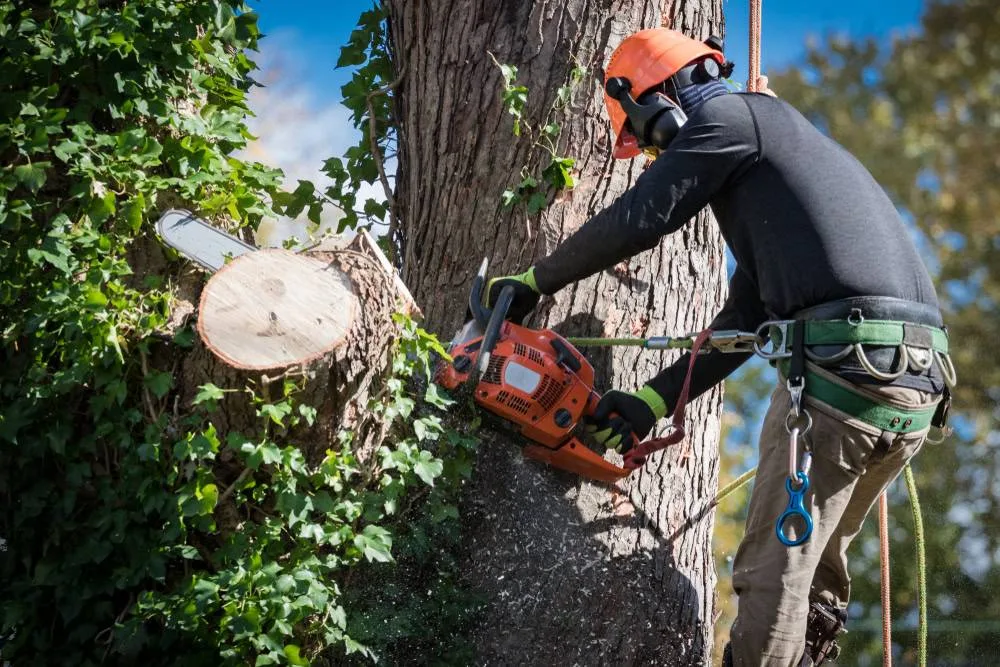Tree Services in Ronkonkoma, NY
Your Trees Handled Right the First Time

Hear from Our Customers

Professional Tree Care Ronkonkoma NY
Your property stays protected. Your trees get the care they need. You don’t have to deal with cleanup, permits, or wondering if the job will actually get finished.
When you work with certified arborists who understand Ronkonkoma’s weather patterns and local tree species, you get results that last. We show up with professional equipment, complete the work safely, and haul away every branch and wood chip.
No more worrying about that leaning oak after the next storm. No more explaining to neighbors why there’s still a pile of debris in your driveway three weeks later.
Ronkonkoma Tree Service Company
Green Light Tree Services has been handling tree work in Ronkonkoma and throughout Suffolk County for over 17 years. Homeowners call us when they need the job done completely the first time.
Our certified arborists know local regulations, understand how to work in tight suburban spaces, and treat your property with the same care we’d want for our own. We’re fully licensed and insured because that’s how professional tree work should be done.
Long Island storms hit fast and hard. When trees come down, you need someone who responds quickly with the right equipment and expertise to handle dangerous situations safely. That’s exactly what you get.

Tree Removal Process Ronkonkoma
First, our certified arborist comes out and assesses what you’re dealing with. We look at your trees, identify any safety concerns, and explain what needs to happen and why. You get a clear written estimate with no hidden fees or surprise charges.
When we show up to do the work, protecting your property comes first. Tarps, barriers, whatever it takes to keep your landscaping and structures intact. Then we handle the tree work using professional equipment and proven techniques that get results.
After the trees are handled, complete cleanup happens before we leave. All debris gets removed, the area gets raked clean, and you’re left with exactly what you wanted – problem solved, property protected, no mess to deal with.

Ready to get started?
Tree Services Ronkonkoma NY
Tree removal when something needs to come down. Professional tree trimming and pruning that actually improves tree health. Emergency response when storms hit. Ongoing maintenance that prevents problems before they become expensive emergencies.
Ronkonkoma’s location on Long Island means dealing with nor’easters, summer storms, and the occasional hurricane impact. These weather patterns affect local tree species in specific ways, and knowing how to prepare for and respond to storm damage makes the difference between minor cleanup and major property damage.
Stump grinding removes trip hazards and eyesores completely. Land clearing gets handled efficiently whether you’re installing a pool or preparing for construction. Emergency tree services mean someone answers the phone when trees come down on houses or block driveways – because you can’t wait until Monday morning.

How much does tree removal cost in Ronkonkoma, NY?
Tree removal costs in Ronkonkoma depend on the tree’s size, location, and complexity of the job. Small trees under 30 feet typically cost $300-800, while larger trees can range from $1,000-3,000 or more depending on the situation.
Trees near power lines, houses, or in tight spaces require more careful work and specialized equipment, which affects pricing. That’s why every job gets a free estimate from a certified arborist who evaluates your specific situation.
You get a written quote that breaks down exactly what’s included – removal, cleanup, debris hauling, everything. No surprises when the work is done, and no hidden fees for things most people assume are included.
Do you provide emergency tree service in Ronkonkoma?
Yes, Green Light Tree Services provides 24/7 emergency response for storm damage throughout Ronkonkoma. When trees fall on houses, block driveways, or create safety hazards, you need immediate help – not an appointment next week.
Our emergency crew responds quickly with professional equipment to clear dangerous situations and restore access to your property. Priority goes to safety hazards first, then access issues like blocked driveways.
Emergency work gets the same complete cleanup as scheduled jobs, and you get documentation for insurance claims if needed. We understand that when a tree threatens your home or family’s safety, waiting isn’t an option.
Are you licensed and insured for tree work?
Green Light Tree Services is fully licensed and carries comprehensive liability insurance and workers’ compensation coverage. Our insurance protects your property in the unlikely event of accidental damage during tree work, and you can request proof before any work begins.
This licensing and insurance is crucial because tree work involves significant risks to property and people when not handled by qualified professionals. Many homeowners don’t realize that hiring an uninsured tree service can leave them liable for injuries or property damage.
The peace of mind that comes with working with properly licensed and insured professionals is worth it. You know the job will be done safely, and you’re protected if something goes wrong.
What's the best time to trim trees in Ronkonkoma?
The best time for tree trimming in Ronkonkoma depends on the tree species and your goals. For most deciduous trees common on Long Island, late winter or early spring before new growth begins is ideal for the tree’s health.
This timing allows you to see the tree’s structure clearly and promotes healthy spring growth. However, dead or hazardous branches should be removed immediately regardless of season – safety comes first, always.
Some species have specific requirements that matter. Oak trees shouldn’t be pruned during certain months to prevent disease, and maples are best pruned in late summer to avoid excessive sap bleeding. A certified arborist knows these details and can recommend the best timing for your specific trees.
Do you clean up after tree removal?
Complete cleanup is included in every job – no exceptions. That means hauling away all branches, logs, and debris, not just piling it at the curb for you to deal with later. We rake up sawdust and wood chips, and your property gets left cleaner than when we arrived.
Some companies charge extra for cleanup or leave debris behind, but that’s not how professional tree service works. The job isn’t finished until everything is cleaned up and hauled away in our trucks.
You don’t lift a finger or worry about disposal. No need to figure out how to get rid of massive tree limbs or find someone to haul away piles of branches. That’s all part of what you’re paying for.
How quickly can you respond to storm damage?
We respond to storm damage emergencies as quickly as possible, typically within hours of your call. When storms hit Ronkonkoma, we prioritize safety hazards first – trees on houses, blocking emergency access, or threatening power lines get immediate attention.
Our crew is equipped to handle dangerous situations safely and efficiently. We understand that when a tree comes down on your property, you need immediate help to secure the area and prevent further damage, not a callback in a few days.
After handling the immediate danger, we work quickly to clear debris and restore normal access to your property. All emergency work includes complete cleanup and proper documentation for insurance claims – because dealing with insurance is stressful enough without missing paperwork.